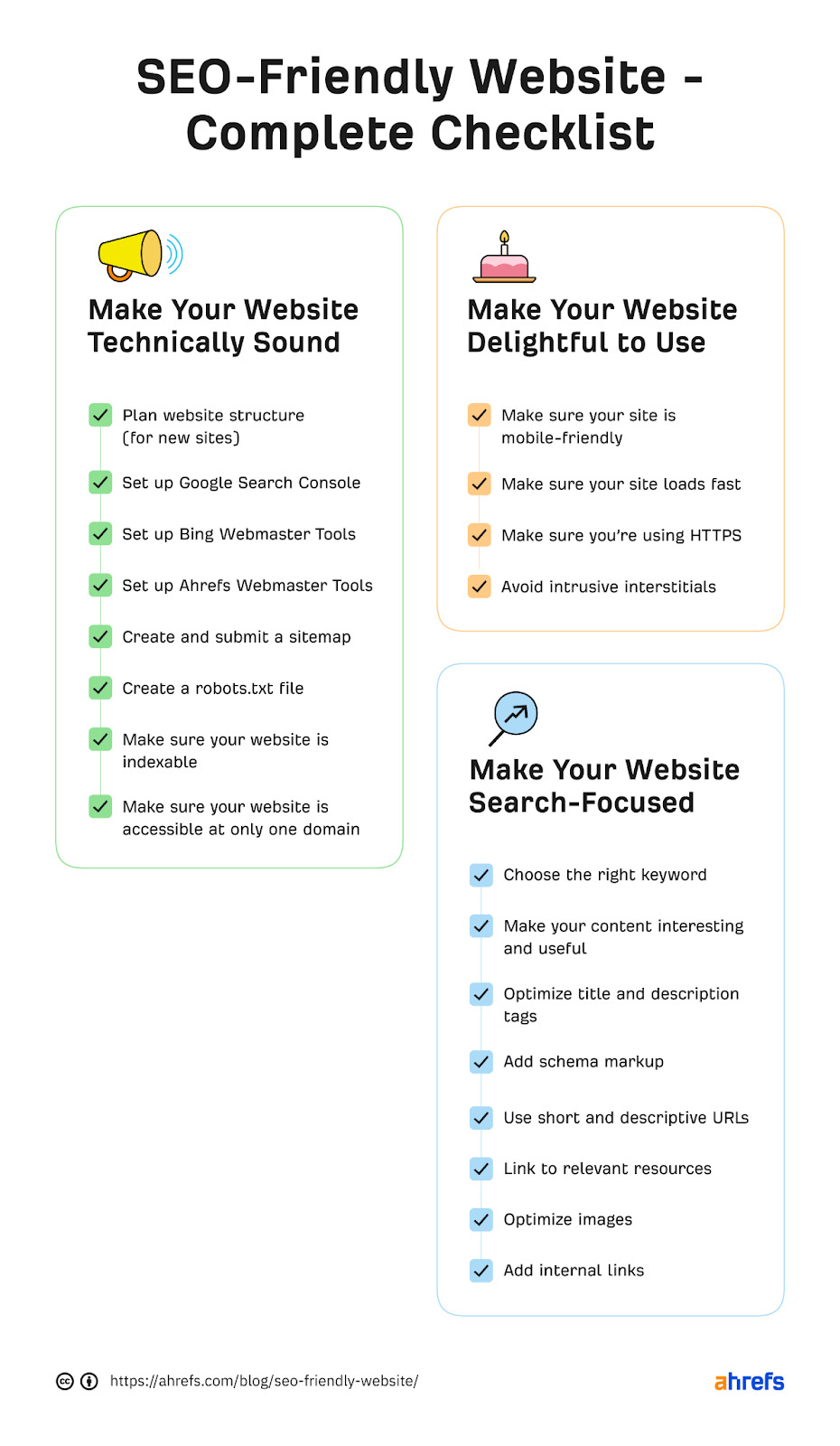Index Surge: Amplifying Your Insights
Stay updated with the latest trends and news across various industries.
Designing for Darling Google: The Secret Recipe to SEO-Friendly Sites
Unlock the secrets to SEO-friendly design and attract Google’s love! Elevate your site’s ranking with our expert tips and tricks!
5 Essential Principles of SEO-Friendly Web Design
Creating a website that is both visually appealing and SEO-friendly requires adherence to several essential principles. Firstly, responsive design is crucial; your site should be easily accessible on various devices, including smartphones and tablets. Search engines prioritize mobile-friendly websites, and a responsive layout ensures that users have a seamless experience regardless of their device. Secondly, consider the loading speed of your web pages. A fast-loading site not only improves user experience but also plays a significant role in search engine rankings. Tools like Google PageSpeed Insights can help identify areas where your site can improve.
Moreover, focusing on semantic HTML enhances the structure of your content. Using header tags (H1, H2, etc.) to outline your articles makes it easier for search engines to understand the context of your content. Next, optimizing your images by using alt tags not only improves accessibility but also provides search engines with additional context. Lastly, ensure that your site has a clear navigation structure; a well-organized menu and internal linking system help users and search engines alike understand how to navigate your site effectively.

How to Create User-Centric Designs that Rank Higher on Google
Creating user-centric designs is vital for improving your site's visibility on Google. To achieve this, start by understanding your audience through thorough research. Utilize analytics tools to identify user behavior and preferences, which will guide your design decisions. Once you have this data, create personas that represent your typical users. This will help you tailor your content and layout to meet their needs. Additionally, ensure that your website is easily navigable with clear calls-to-action that resonate with your users.
Next, focus on enhancing the user experience (UX) by employing best practices in web design. Implement responsive design to ensure your site functions well on all devices, and prioritize speed since a faster site can significantly boost rankings. Incorporate elements such as white space to declutter your layout and improve readability. Finally, don't underestimate the power of engaging content—utilize visuals, infographics, and videos to captivate your audience, which can lead to longer dwell times and lower bounce rates. These factors together contribute to a higher ranking on Google.
The Ultimate Checklist for Designing SEO-Optimized Websites
Creating an SEO-optimized website requires a strategic approach that begins with understanding your target audience and the keywords they use. Start by conducting comprehensive keyword research to identify the terms that resonate with your users. Utilize tools like Google Keyword Planner or SEMrush to find relevant keywords with high search volume but manageable competition. Once you’ve compiled your keyword list, incorporate these into your website's title tags, meta descriptions, headers, and throughout your content. Prioritizing user experience is equally important; ensure your website is mobile-friendly, loads quickly, and has a clear navigation structure that enhances user engagement.
Next, don’t overlook the technical aspects of your SEO-optimized website. Here’s a quick checklist to guide you:
- Ensure your website is secure (HTTPS).
- Optimize images with descriptive file names and alt tags.
- Use clean and SEO-friendly URLs.
- Implement schema markup to help search engines understand your content.
- Create an XML sitemap to aid in indexing.
By following this checklist, you'll create a solid foundation for your website's SEO performance, improving visibility and driving more organic traffic.